In times of total uncertainty, we need a good laugh! What if you could trace our modern diseases back to the discovery of the New World and industrialized food? Tongue in cheek, I’m not joking. Let’s just trace the history of our beloved first meal of the day, in light of world money and food addictions. Yep. Especially sugar. For sure, breakfast wasn’t always corn flakes or toast with jam. Nowadays, what we eat is determined much by personal habit, but at what cost? Why are ALL the top COVID-19 comorbidities rooted in high blood sugar? You guessed it: Diabetes, Hypertension, High blood pressure, Heart disease, Alzheimer’s & Dementia, Arthritis & Osteoporosis, Obesity, Inflammation, and more are all related to high blood sugar. To learn the true story of how it all began (and how to avoid disease) read on…
What did Cavemen eat for breakfast? Early humanoids are said to have lived in Africa, a lush green landscape. Sounds idyllic, but life was tough, and at any moment you could be eaten by a saber-toothed tiger! The first ape-men are thought to have been primarily fructarian, like modern gorillas, who ate a diet of mostly fruit, along with a few ants and termites. Delicious!
Our Humanoid ancestors ate anything in season: berries, leaves, roots, wild grains, and seeds. Meat was available if you could catch it. Each season brought special treats. In the spring, raw eggs were a delicacy. In the summer, insect larvae were tasty tidbits, and crickets a favorite high-protein breakfast. Don’t worry, these recipes aren’t in my books!
A Genetic Mutation That Prevented Starvation.
In the Miocene period about 20 million years ago, there was a cooling of the planet, bringing winter. Starvation threatened the people. Many died, and something amazing happened. A mutation occurred that further separated humans from apes. Modern humans have higher serum uric acid levels than apes. This mutation in uricase made ape-man a highly efficient processor of fructose, so that even small amounts of fructose were stored as fat. This allowed them to build fat during the summer, and utilize that energy to stay alive during the winter when food was scarce.
The tendency to store fat from fructose sugar may have saved humanity.
This mutation became part of our genetic heritage. How is this relevant to a history of breakfast? Well, since medieval times we’ve been eating ever-increasing amounts of fructose and sugars. This genetic mutation left humans vulnerable to obesity from even small amounts of fructose. And that is still true today. Amazingly, the mutation that may have saved humans from extinction, could be at the root of our tendency to gain weight from fructose, which has brought us a global epidemic of obesity.
In Paleolithic times, breakfast was whatever you could find.
The Paleo period is said to span the period of 2.6 million to 10,000 years ago. Humans walked a vast landscape, gathering anything they could find or catch. They ate seasonal plants and seeds ground with stone grinders. Hunting was an important activity. They used ritual and sometimes painted images in caves, as if to call the animal spirit to ask for a sacrifice for the survival of the tribe. When an animal was offered and the hunt was finished, it was honored and all parts of it were used – nothing was wasted. The most valuable organs, heart and liver were consumed immediately. Muscle meats were dried to store them, so that a single animal could feed the tribe for a long time.
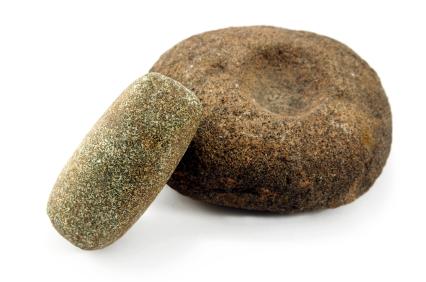
A Paleo breakfast might have been hand-ground nuts, seeds, roots, or berries.
During pre-historic times, humans migrated across the planet for thousands of years.
Ages passed as cultures rose and fell. “Pre-historic” means “before history” because there’s a lot we don’t know. To make matters worse, periodic floods devastated the Earth, and entire cultures were lost. Much of our history was washed away, except for what’s left in bones, stone tablets, and rocks.
10,000 years ago something amazing happened – Agriculture!
In the fertile crescent of the Middle East, agriculture was developed, growing wheat, barley, and spelt. Agriculture changed the human lifestyle forever. Farming was a sacred role in the community. It was the farmers who understood calendars and seasons. They knew how to plant seeds and harvest in harmony with the elements, Sun, and Moon. This was like an unwritten version of our old-fashioned Farmer’s Almanac, passed down from generation to generation, and it was considered very sacred. For breakfast the people ate grains that had been soaked to soften, ground with stone grinders, and boiled into a thick porridge. In the early Christian era, a common breakfast might have been a dense bread of sprouted grain, like Essene bread, with olives on the side.
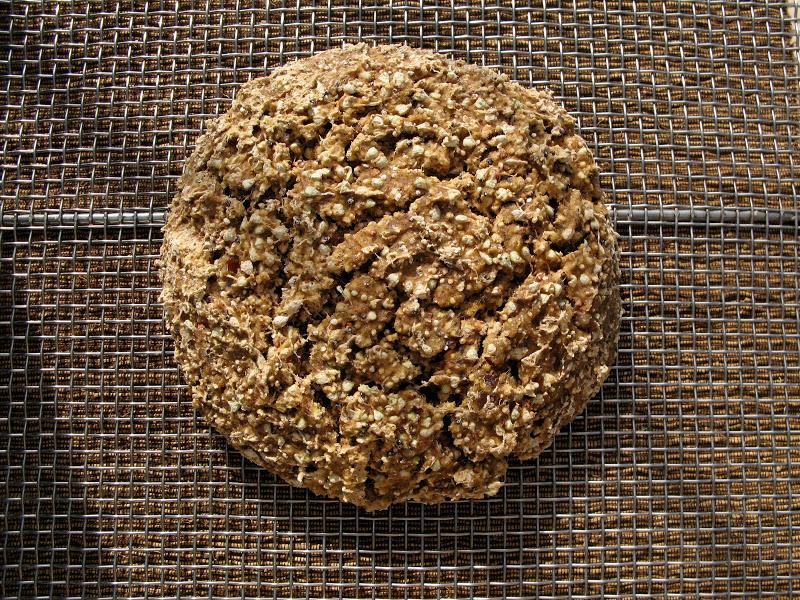 Essene Bread was made of sprouted grains, baked in a low oven or in the sun.
Essene Bread was made of sprouted grains, baked in a low oven or in the sun.
What was for breakfast in other areas of the world?
Well, If you lived in ancient China, you might have had a breakfast of “jook”, a thick porridge of brown rice boiled for hours, with vegetables or meat, and a cup of tea. And it is fascinating to learn in the Bible that John the Baptist was a wild, holy man who lived on a simple diet of locusts and honey! In ancient Greece, a classic breakfast was bread made from stone-ground barley, with eggs, berries, sun-dried grapes, and figs. Yummy!
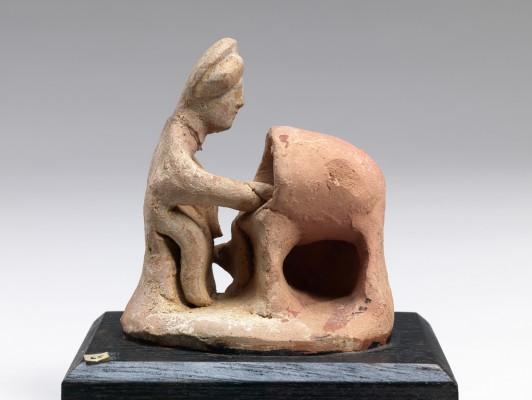 A Greek woman baking stone ground barley bread, 450 BC
A Greek woman baking stone ground barley bread, 450 BC
Romans often ate a breakfast of whole grain bread with cheese, olives, salad, nuts, raisins, and for the wealthy – meat. Of course all your meals would be washed down with wine.
After the Roman Empire fell in 476 CE, Europe fell into a Dark Age.
The medieval church took a dim view of breakfast, considering it a type of gluttony, so it is said that people ate just two meals a day. Only a few folks that did heavy manual labor ate a morning meal. If you were one of those, you might have porridge on a “trencher” with a cup of ale. Since there were no plates, your trencher was a flat round piece of hard bread. When you finished breakfast, you could eat the plate!
The history of breakfast is intimately linked to sugar!
Mankind’s early breakfasts were not sweet. However in the most recent 500 years, an entire civilization has become impassioned and addicted to a sweet taste. Sugar originated in Southeast Asia in New Guinea about 8,000 BCE. From there it spread through Asia. In ancient India, sugar was considered a sacred food, and was burned during ceremonial offerings to the Gods, along with incense, milk, and honey. Indians discovered how to crystallize sugar around 1,100 BCE, calling it khanda in Sanskrit. The name caught on, spreading through Persia and Turkey to Europe where it became candy. Hard candy crystallization processes also traveled East to China, carried by Buddhist Monks. By 600 CE Muslims had established major sugar cane cultivation throughout the Middle East and North Africa. Sugar was a totally new addition to the human diet! Sugar consumption has increased steadily from medieval days. Especially in the past 100 years our sugar consumption has soared dramatially to huge levels.
Sugar Comes Home with the Crusaders!
During the 12th century, European crusaders brought home an exotic new spice from the Holy Land. They called it “sweet salt”, and it was frightfully expensive. Only the wealthiest people could afford it, and they sprinkled it on their food in tiny amounts. In 1226, King Henry III of England paid 450 modern dollars for three pounds of sugar!
By 1525 sugar was available to wealthy Europeans. Some of them ate so much their teeth turned black. Black teeth became a symbol of wealth, and soon many women blackened their teeth as a fashion and status symbol.
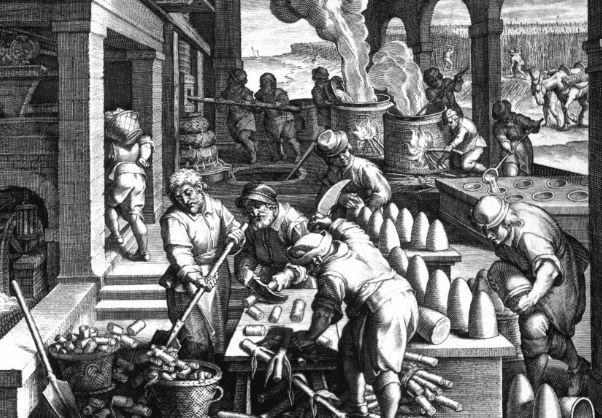 Sugar cane was melted and crystallized into cones for shipping.
Sugar cane was melted and crystallized into cones for shipping.
Europeans’ growing passion for sugar and sweets drove New World Exploration.
The wealthy upper-class and royalty searched for a way to grow sugar more cheaply than Asian imports. A mad rush ensued to grab territories, as nations competed to claim the choicest islands and warm climates needed. Columbus brought sugarcane to the New World. Soon the Caribbean and Brazil became busy sugar plantations, using African slave labor. By 1750, 11 million slaves had been brought from Africa to fuel the increasing demand.
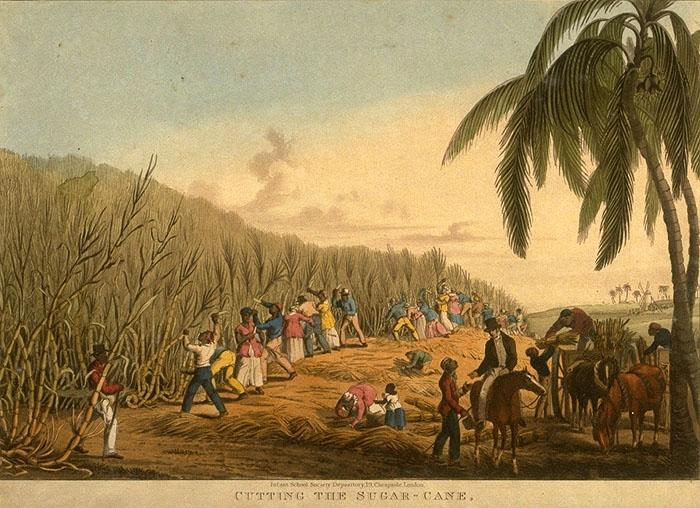 Harvesting sugarcane in Antigua was a labor-intensive task, requiring thousands of slaves.
Harvesting sugarcane in Antigua was a labor-intensive task, requiring thousands of slaves.
Sweet Breakfasts come to Europe, and a new addiction is born!
Before sugar was available, a traditional breakfast was hot porridge of soaked grain and fresh cream. As more sugar was imported, by 1790, breakfast customs changed completely. Instead of porridge, people could have an assortment of jams, scones, pastries, tea, coffee, and chocolate, all from the new colonies. One could honestly say that the exploration of the New World, and the founding of the 13 colonies that became the United States, was almost exclusively fueled by Europeans’ desire for wealth and their new addiction to sugar!
British Doctor pronounces: “Sugar is Worse than Eating Nothing”
In 1793 a ship full of cane sugar from the colonies was wrecked in the Atlantic ocean. Most of the crew died, and the five surviving sailors were finally rescued after being marooned for nine days. When they were recovered, they were in grave condition due to starvation, having consumed nothing but sugar and rum. Sadly, none of them survived; they all expired of kidney failure. The attending doctor was curious to conduct further experiments by feeding sugar to dogs. He soon discovered the dogs wasted and died as well. His conclusions were published in 1816 stated that for humans and animals: “Sugar is worse than eating nothing”. In fact, he said sugar actually leeches precious nutrients out of the body, and excretes them through the urine.
What about early American breakfasts?
Traditions for the morning meal followed the ethnic tastes of new immigrants. Many English ate oatmeal “groats”, the hulled grain cut into pieces and soaked overnight before cooking. Rolled oats were unknown. Groats had to be cooked between 4 and 24 hours, depending on how it was ground. German immigrants had sausage and potatoes for breakfast. Southern folks ate grits and gravy. In the French Quarter people started the day with pastries and chicory coffee. The Dutch enjoyed an early version of donuts called “olykoeks”, which were fried pastries in oil. Yummy!
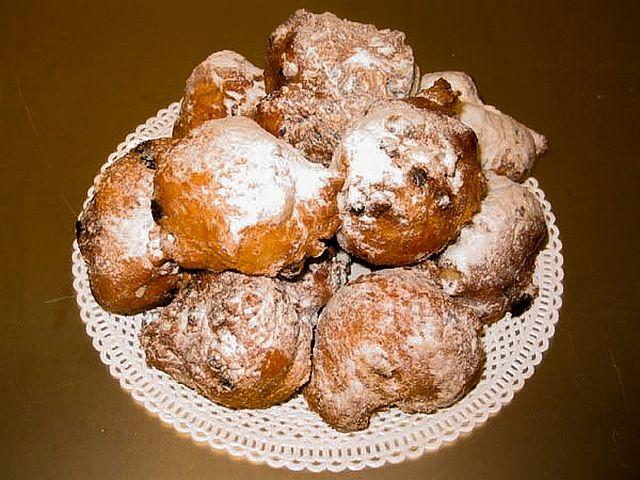 Dutch olykoeks, or oil cakes were the precursor to modern donuts.
Dutch olykoeks, or oil cakes were the precursor to modern donuts.
Pioneers traveling the American West ate simple foods, consisting of good-old American cornmeal and hot water, prepared in every imaginable way. They created new breakfast traditions like cornmeal mush, corn pone, Johnnycakes, and corn dodgers. One breakfst favorite of wagon trains was Ashcakes, which were cornmeal wrapped in cabbage leaves cooked in hot ashes. Hoecakes were also a favorite – meaning small corn pancakes cooked on a garden hoe over a campfire.
Since 1900 Americans have seen huge changes in breakfast.
Most of these developments have been designed by the food industry to bring increased productivity, convenience, longer shelf life, and economies of scale. While this serves the food industry, so far most of the changes come at a very high cost to our health.
How did this happen? One important shift in America took place around 1900.
We changed from an agrarian society where people grew their own food on a plot of land, to a consumer society where we live in cities and buy food. This created a major energetic change in food and food quality. People no longer enjoyed breakfast foods they had produced with their own hands. Instead, people had to hurry to work in the morning. With less time to cook, prepared foods became easier than homemade. The consumer model offers powerful financial incentives to food producers, infusing our food with an energy of selfish motive for money or gain. The element of greed in our modern food is everywhere. It can’t be seen or tasted, but it most certainly affects our bodies, our health, and the health of the Earth.
Boxed cereal, an American tradition? Nope. It’s actually a very recent marketing invention. In 1870 a tiny mistake changed the face of breakfast forever. Harvey Kellogg, director of a sanitarium in Michigan, made a ready-to-eat cereal for his patients from soaked, boiled wheat bran pressed thru rollers. It was baked like a cracker, and ground into cereal called “Granula”. It was tasteless, high in fiber, and considered very healthy. One day his chef forgot and left the wheat soaking too long. When he ran the stale pieces through the rollers, the result was tiny separate flakes. “Wheaties” became an instant success with his patients! Harvey refused to allow commercialism or sugar to ruin his healthy cereal. But his brother William bought the company and created a winning venture. By 1930, Kellogg and others used cheap mash and high temperature extrusion processes, spraying flakes with sugar to make them sweet and crunchy – forever. Wheaties, corn flakes, and frosted flakes sparked a new tradition of nutritionally empty breakfasts in colorful boxes marketed to children.
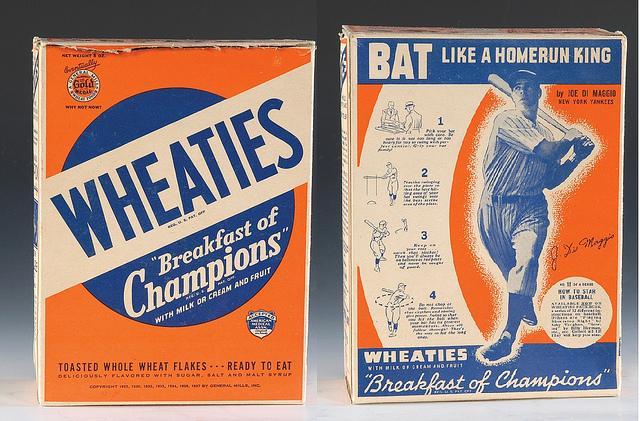 A Wheaties box from 1937 with Joe Dimaggio
A Wheaties box from 1937 with Joe Dimaggio
In 1908 another not-so-healthy discovery was made.The Japanese learned how to extract glutamic acid from seaweed, mimicking the “umami” flavor of real seaweed. By 1960 American food producers found a way to synthesize the flavor using GMO bacteria to ferment glutamic acid. Monosodium Glutamate, MSG, or “processed free glutamic acid” was born and approved by the FDA as a “natural flavor”. Even disgusting, stale foods tasted fantastic with MSG as a flavor enhancer! New breakfast products enriched with MSG appeared, like “Accent” flavored salt, sausages, cured meats, fast-food chicken patties, ramen noodles, and protein powders. Called an “excito-toxin” because it excites the brain centers related to taste, MSG produces brain lesions, migraines, nerve degeneration, endocrine disorders, retinal damage, and obesity. Unfortunately MSG is difficult to detect, as it can be listed under 100 other names like Hydrolyzed Vegetable Protein, Soy Protein Isolate, or Yeast Extract. It’s hard to know, since “natural flavors” on an ingredient label might very well be MSG. The best defense is to eat whole, unprocessed foods.
Corn syrup comes to breakfast.
In 1957 food industrialists developed a process to extract high fructose corn syrup from corn. High tariffs on imports made government-subsidized corn cheaper than imported sugar. By 1984 the food industry had switched to high fructose corn syrup, and our fructose consumption has been rising ever since. Unfortunately, fructose converts quickly into fat-stores, increasing the risk of diabetes and obesity.
Are you addicted to sugar yet?
These days everybody’s got a sweet tooth, especially for breakfast. Sugar has many names: Cane sugar, agave, maple syrup, coconut sugar, honey, dates, rice syrup – these are all sugars, producing the same rise in blood sugar and insulin response. A recent study found that foods that spike blood sugar are biologically addictive. They noticed that sugar and refined carbs cause a brain chemistry response that is a true biological addiction, lighting up the same areas of the brain as cocaine. To find out for yourself, try eating a balanced diet that’s completely free of sugars and grains for a few days or a week. If you feel cravings, mood swings, irritability, or worse, you’ll have your answer.
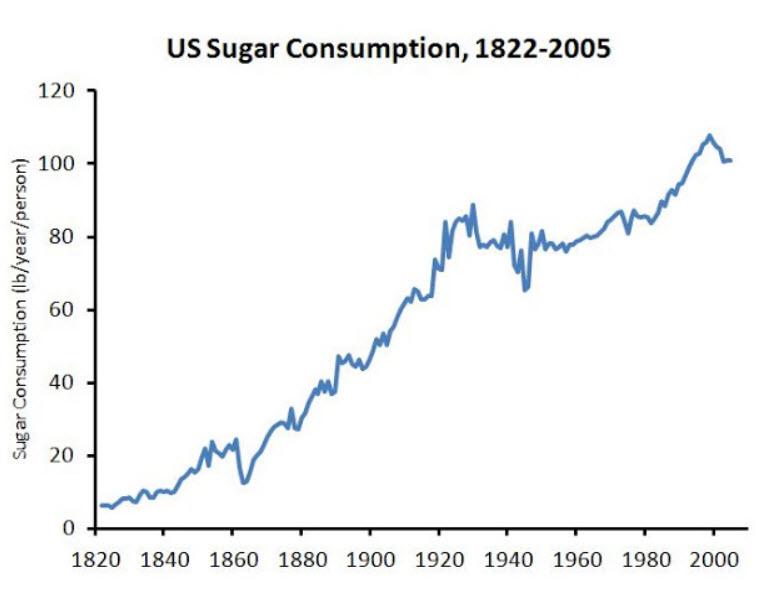
Sugar takes a devastating toll on our health.
It is at the root of obesity and chronic disease in modern culture. Sugar feeds cancer, triggers weight gain, and promotes premature aging. There are several kinds of sugar, such as glucose and fructose. The human body metabolizes fructose differently, and the burden of metabolizing fructose falls on the liver, where any excess is quickly converted to fat. This helps to explain today’s epidemic of obesity and diabetes. As of 2014, Americans eat an average of 130 pounds of added sugar per person per year.
Common diseases related to high blood sugar (and top COVID-19 comorbidities):
- Diabetes
- Hypertension, High blood pressure
- Heart disease
- Alzheimer’s & Dementia
- Arthritis & Osteoporosis
- Obesity
What so-called natural sugars have a “low glycemic level”?
A marketing claim of “Low Gycemic” appears positive on the surface. But sadly, “glycemic” measures only the glucose, excluding the fructose and other sugars. (We don’t have a “fryctemic” index yet!) It’s critical to see beyond marketing hype, to read the actual sugar and carb count on the labels, and do the math to see all the sugars. Fructose sugar is particularly damaging to the liver, as it converts quickly to fat like no other food, perhaps due to that Miocene mutation. Table sugar is about 50% fructose, the rest being glucose. High fructose corn syrup is about 55% fructose. The ratios are similar in other so-called “healthy” sweeteners, including honey, maple syrup, agave, coconut sugar, and concentrated fruit juices. Yep. All of them contain glucose and fructose in roughly equal amounts. Other high-fructose foods to avoid are sweet fruits like bananas and grapes, fruit juices, dates, raisins, dried fruits, soft drinks, and processed foods.
Genetically modified food come to breakfast.
Farmers through the ages have always selected the best seeds in a slow process of hybridization. But the art of gene splicing was only discovered in 1972. GMO food landed on our breakfast tables in 1990 when the FDA allowed cheese to be made with cheaper genetically modified rennet, instead of extract from cow stomach. Now 85% of our cheese uses GMO rennet. The best defense is to eat organic, whole unprocessed foods.
GMO food production has soared since the mid 1990’s, led by seed giant Monsanto. Now GMO represents 95% of US soy, corn, beets, and canola. GMO grains have become the primary feed for chickens, eggs, cows, pigs, and farmed fish. We find GMO ingredients in processed foods everywhere. GMO beet sugar has grown to be 55% of the sugar used in the USA. Since it is cheaper than cane sugar, GMO beets are the #1 sugar for the food and restaurant industry. Unfortunately, GMO beet sugar is particularly hard to identify on labels. Since cane sugar is viewed as more desirable, it is usually marked clearly. To decipher labels in packaged foods, beware of anything labeled simply “sugar”, and know it is probably from GMO beets.
In 20 short years, we’re only beginning to see the effects of GMO food on human health. So far, GMO’s are known to destroy intestinal flora, cause auto-immune diseases, food allergies, bloating, infertility, birth defects, liver atrophy, and altered sperm cells, to name just a few.
The nutritional value of GMO food is a joke. A recent study comparing GMO corn with non-gmo corn, found vastly lower levels in all the major vitamins and minerals, plus a surprisingly high content of toxic formaldehyde in GMO corn. So much for our favorite old-fashioned hoecakes!
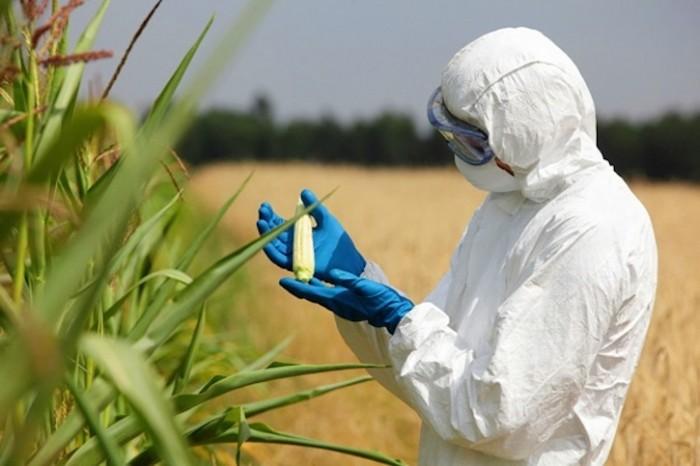 95% of corn is GMO. The nutritional value of GMO corn is vastly lower than old-fashioned corn.
95% of corn is GMO. The nutritional value of GMO corn is vastly lower than old-fashioned corn.
How to avoid GMO’s? The best way is to buy organic. Organic food is more expensive, however you get a LOT more nutrition. And the higher nutritional value far exceeds the price difference. So we’re actually getting more for our money with organic foods. To avoid GMO’s we have to become smart shoppers. Unfortunately, simply buying organic is not the whole picture. Most people don’t know that processed food labeled just “organic”, can still legally contain up to 35% non-organic and GMO ingredients. Only if it is labeled 100% organic, you can be fairly sure it’s GMO-free.
Throughout history, food changes happened slowly in our lives. However during the past 100 years, many major new developments are coming so fast, that our laws, or society, our digestion, and our nervous systems can’t keep up. We can’t cope, and this is stressing our health, our brains, and our spirits. The epidemic of chronic diseases is clear evidence of this, with diabetes, obesity, arthritis and Alzheimer’s rates growing every year. There is great misinformation, confusion, and suffering. We need new tools, a strong community, and reliable information to protect our health.
Sorry, I can’t resist a plug for my book, Good Morning Paleo.
It’s a new concept in breakfast, with 165 delicious recipes, a healthy way to start your day. It uses whole food ingredients, with no gluten, grains, dairy, GMO’s, or sugar. The recipes contain low-carb flours and healthy sweeteners that won’t raise your blood sugar. The book can help you build harmony in your body on a cellular level.
“Eat breakfast like your life depends on it.”
I wrote this book to empower people to start the day in a new and different way. When you eat a great breakfast how much does it improve your whole day? And if you can make a habit of a good breakfast every day, with delicious flavor and high nutrition, how will it change your whole life?
You deserve to be the master of your health and your life, free of the addictions and cravings of modern industrial food. My book will help bring your metabolism into balance. And the recipes are so delicious, your taste buds will swoon with joy! THAT’s really why I wrote the book!
Find Book on Amazon




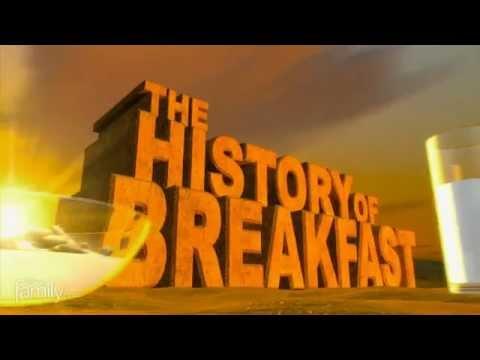

1 Reply to "History of Breakfast - What Happened to Our Food?"
mcdonldswillmakeyoufat July 27, 2023 (1:16 pm)
WHEATIES BREAKFAST OF CHAMPIONSSS! ROCK AND ROLL MCDONALDS FOR THE WINNN!!!